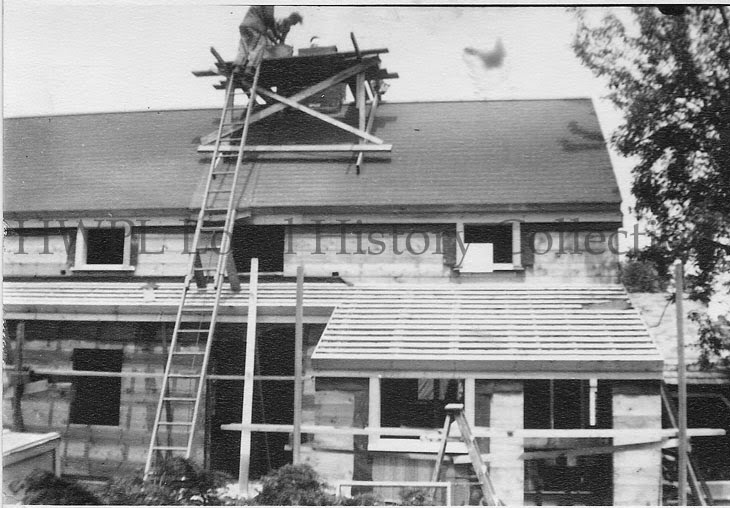 |
| Richard and Edith Lennox |
An article in the December 29, 1994 South Shore Record states that 19 year old Richard Lennox began with a one-fifth interest in the property, a $200 wedding gift, his wife, Edith's $22-a-week secretarial job and his grandmother's signature on a bank loan. With those assets, and a $50 inventory, Lennox expanded the business, created their own brand of Early American furnishings, and expanded the ambiance of the shops. By 1953 was the subject of a feature article in the trade publication Giftwares, which shared Lennox's story, his business philosophy and his techniques for growing his business into the success that it became, attracting shoppers from all over the metropolitan area and mail orders from all over the United States.
 |
| Building the Honeymoon House (c1952). |
At this time, the original Seaman homestead (home of Lennox's grandparents) was moved to the corner of Broadway and Trinity Place. Joan Battino wrote in the December 31, 1998 South Shore Record:
Their home, shop and country store was a great success for more than 70 years. If ever one needed a special wedding present, a baby gift, a knicknack or just a fun afternoon in a wonderful place to shop, the Lennox Shop was the first place to come to mind. Christmas transformed the store into Santa's own private haven. Incense burned throughout, a fire roared in ever fireplace, light hearted holiday tunes were piped into every corner and the shop was decorated from roof to floor plank with pine branches and red ribbons. No one left without a candy cane.

Richard Lennox died in 1989 and the property was eventually sold to the Hewlett-Woodmere Public Library for its 1994 expansion.
During this month's exhibit of Five Towns History in the Library's Gallery, we have on display some memorabilia from the Lennox Shop as well as local artist Maxwell Diamond's renditions of views of the Lennox Shops buildings, photographs from the H-WPL collection and examples of work from other local artists.
 | |
| The late Bob Longworth, a cousin of Richard Lennox, created a miniature reproduction of the original 1928 building in its Christmas glory. |
Battino, Joan. "Lennox Shop remembered in miniature," South Shore Record, December 31, 1998, p. 8.
Namee, M. Virginia. "The Lennox Shop Story, 1928-1953," Giftwares, November 1953.
"The Way We Were: Lennox House," South Shore Record, (date unknown)

